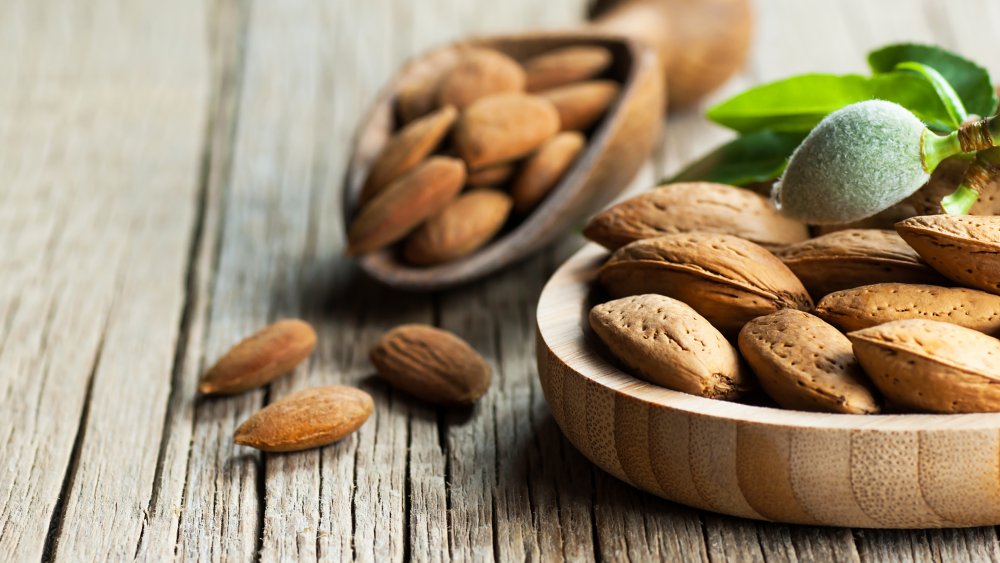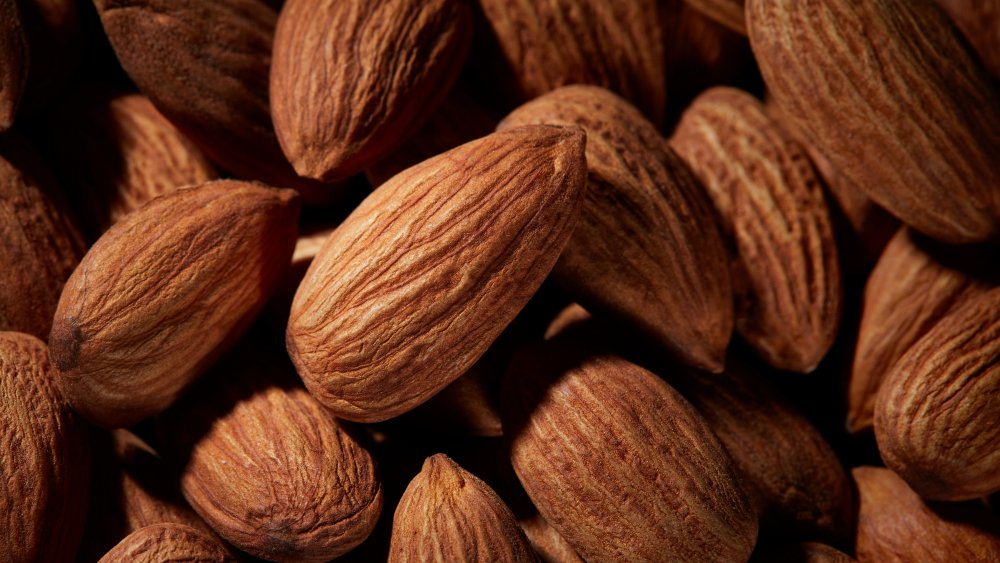Why You Should Think Twice About Eating Almonds
Almonds seem to be rather ubiquitous. Whether in marzipan, an almond croissant, almond milk, or trail mix, these oval nuts are used in many cuisines for many reasons. They're healthy for you as well — they're full of healthy fats as well as protein, fiber, magnesium, and vitamin E. Studies have shown that they reduce blood sugar and blood pressure and can help in lowering cholesterol (via Healthline).
However, the popularity of the nuts has caused a rather serious issue in California, which is the only state in the country that produces almonds on a commercial scale. An astonishing 80 percent of the world's almond supply comes from California (via The Atlantic). While this type of agricultural prowess would generally be something to celebrate, the growth of almonds in a state that has suffered from drought for years has been something that environmentalists have taken up as a cause, given how much water is required to grow them.
Every almond requires an entire gallon of water to produce. Almond orchards need 33 percent more water than grapes, and the trees must be watered year-round. Even during some of the worst years of California's drought, farmers continued to purchase almond trees, with at least 8 million being scooped up and planted during a one-year period from July 2013 to July 2014 (via Mother Jones).
The problem with almonds
As climate change continues to heat the planet, it seems reasonable to expect that the amount of water required to farm almonds will increase even more.
Given that the state produced an incredible 2.14 billion pounds of shelled almonds in 2017, it's almost impossible to fathom how much water is required to grow such a banner crop (via Bloomberg). A huge amount of the water form the Central Valley aquifers is used for the almond trees — in seven years from 2003 to 2010, the groundwater decreased by 20 cubic kilometers, which is enough water to meet the needs of every household in New York City for more than a decade. Scientists don't know how much water is left in these underground aquifers, or what the farms and communities of California's Central Valley will do once it runs out. One agricultural economist referred to the situation as a "slow-moving train wreck."
Unfortunately, other types of nuts are just as thirsty — pistachios require 3/4 gallon to produce every nut, and a walnut takes 4.9 gallons (via The Kind Planet). Maybe it's time to give all nuts a rest for a while.

